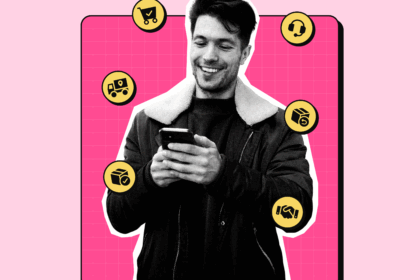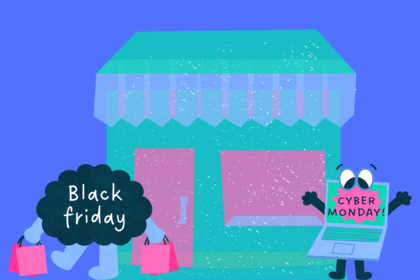We now live in a relationship economy rather than a transactional economy. What is relationship marketing? Relationship marketing is the kind of marketing in which you work to retain customers and maintain long-term relationships with them.
It is a well-known fact that returning customers spend a lot more than your new customers. This is because the returning customers have already experienced the true essence of your brand through your pre-purchase and post-purchase journey. They know what values your brand holds. This trust that you install in those customers, makes them spend a lot when returning.
And you should have known by now that acquiring new customers is a lot more challenging than retaining the existing ones. And moreover, these existing ones drive revenue, so why not build a strong relationship with them?
Steps in relationship building
Omnichannel messaging
With the rise of the digital presence, there are so many channels in which customers prefer to browse. Even TikTok has this new feature through which you can purchase products through the platform itself. It is always necessary to analyze which channels your customers are predominantly on and leverage those channels to efficiently reach your customers and provide tailored messaging or tailored ads according to their preferences. Even some brands do omni-channel customer support through these platforms. Have an integrated customer support system and target all channels.
Post-purchase Customer service
Brands often think that the customer journey ends with the buy button, but the post-purchase customer journey is a very important journey that cannot be compromised and sets the entire stage for retention. Customers could have a number of questions about the order, Make them self-serviceable so that the customer’s general questions are answered right then and there. Beyond that, if the customer has any questions, arm your customer service team with the necessary information required to fulfill the customer’s needs. Set the tone right for your customer service so that the customers aren’t disappointed with the answers they receive, even if things go wrong. Don’t forget to set up FAQ pages!
Collecting their feedback
Customer feedback can be a powerful way of knowing what the customer wants. Give your customer a voice and listen to them. If things go wrong and if an experience was particularly bad for your customer, you can always reach out to them and make them feel valued or listen to them by knowing what went wrong. And often offering them coupon codes or discounts or special codes would at least help them feel better about the brand. And providing a voice to the customer can go a long way.
Customer retention activities
Customer retention activities could be a number of activities with which you can stay in constant touch with your customers and build a relationship with them. Brands can leverage personalization to achieve this. Messaging or emailing during the customer’s birthday and giving them special offers, letting them know if there’s a special discount going on, if there’s an annual sale going on, exclusive access to loyal customers who’ve already purchased from you. At this moment, you can cross-sell and up-sell. There’s a lot of things with which you can do this. Brands often can create an exclusive customer club in which they can gather all the customers and host exclusive events for them, which could mean something to them, which could add value to them. Making the customer feel special is one of the customer retention activities that you can do to build a relationship.
Loyalty programs
Many customers go back to a brand because of their excellent loyalty programs. For example, take Starbucks. You often get a free drink when you get consecutive 4-5 drinks from the vendor. This is an excellent opportunity to make your customers come back to you and providing exclusive access to your high-value customers could increase your loyalty.
Benefits of relationship marketing
- Increased customer lifetime value
- Increased loyalty
- Raise in brand awareness
- Reduced marketing costs
- Word of mouth marketing
- Cross-selling and up-selling opportunities
- Long term growth
Examples of relationship marketing
Made in - relationship building through educational content in branded tracking pages
Made in is a cookware brand in the US. This brand realized that they had a gap in the post-purchase experience. The brand started posting educational content in their branded tracking pages. Educational content like how to wash their pots and pand, quick recipes from renowned chefs, and easy how-to videos. This helped them drive a lot of engagement in the branded tracking pages and they recorded a lot of click-through rates also. This traffic was tracked back to their website.
In just one month, Made In saw 16.2% of customers who visited the tracking page click through to the Made In website, driving highly qualified traffic back to its store. They also saw 8.1% of customers click through on product care-specific marketing assets as customers continued to indulge in content that elevated their experience. (Forbes)
Peloton and it’s excellent relationship building activities
Peloton is an equipment and media-based company. The whole concept of Peloton is to sell their exercise equipment to the customers and build a relationship with them by engaging with them through media.
As soon as a customer purchases a product from Peloton, Peloton usually sends out an email to the customer urging them to join their Facebook group or other social media groups. Customers can keep score of what they achieve through these Facebook boards. They can even compete with other players through these Facebook leaderboards which encourages customers to participate more in the activity. When a customer participates in live workouts with an instructor and when this customer achieves a specific milestone like the 100th ride or 50th ride, this customer is often given a shoutout from the instructor and Peloton sends a free t-shirt to the customer acknowledging them for their achievement. This creates an emotional connection between the customer and the brand, humanizing the brand and creating a very positive image about the brand. This is how Peloton builds its relationship with its customers.
Final word
Gone are the days when customers went back to brands just because they have a lot of variety and very low prices. Still, variety and price remain a factor which is considered by most customers, but customers expect brands to build a long-lasting relationship with them. Customers expect brands to send them personalized messaging and many brands out there have set the bar high for other brands in creating a relationship with the customers. It is vital that you, as a brand, stay ahead of the curve by building a relationship with your audience. Remember that returning customers are the revenue builders for your brand, so don’t go cold on your customers. Relationship marketing is the way!





